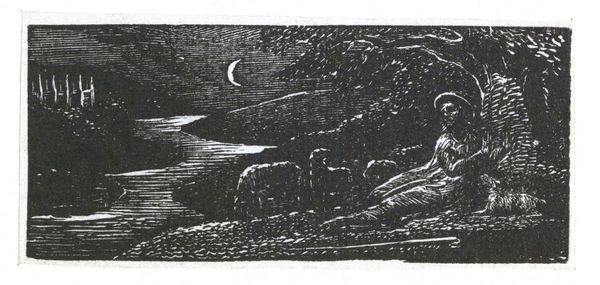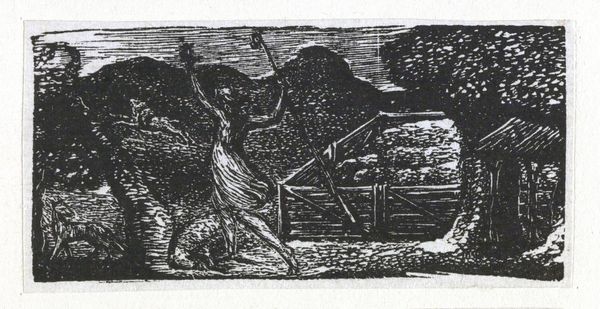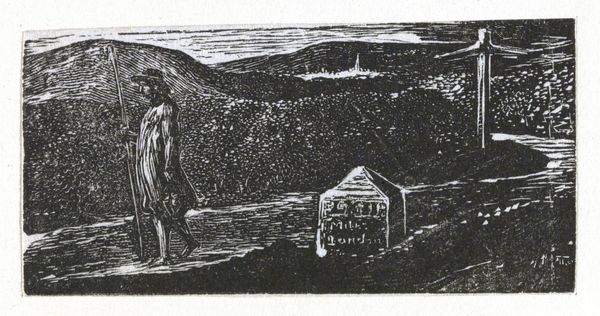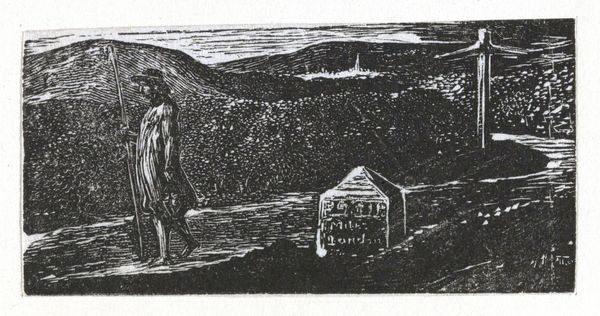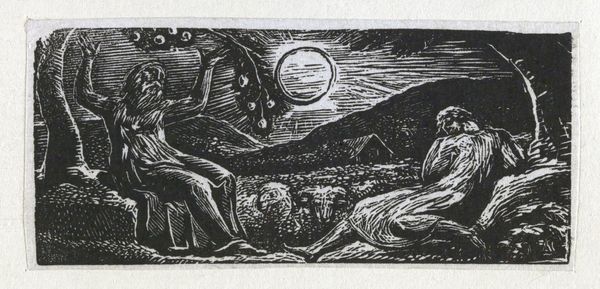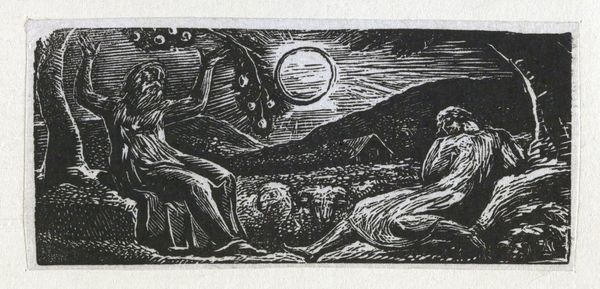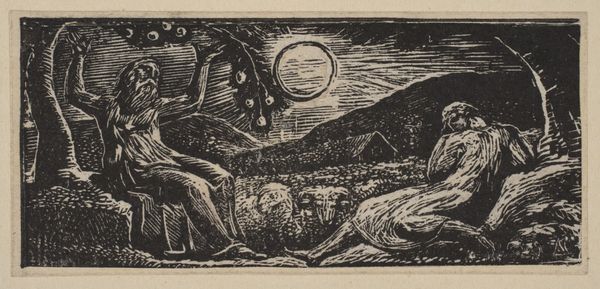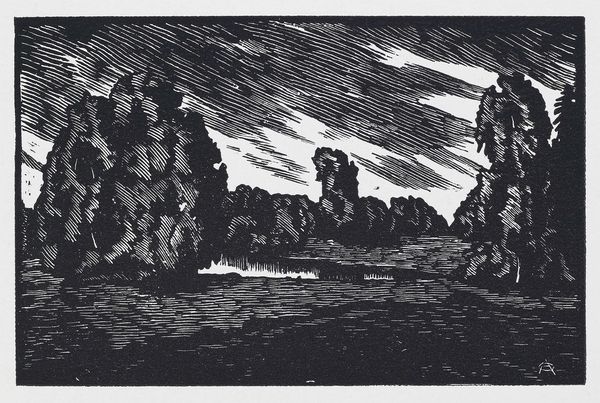
Dimensions: image: 33 x 75 mm
Copyright: NaN
Curator: Here we have William Blake's "Colinet Rests by a Stream at Night," currently residing in the Tate Collections. Editor: It's so dark! All those tight little etchings, packed together... I feel like I'm eavesdropping on a dream. Curator: Blake was quite interested in pastoral themes, and how they reflected social order. The shepherd and his flock were potent symbols. Editor: Funny, I see the opposite of order! Look at the wonky fence on the left, and that wild, scraggly tree. The moon's the only thing that seems calm. Curator: Perhaps Blake is suggesting a critique of idealized pastoral life, hinting at the chaos underlying seemingly peaceful scenes. Editor: Maybe! Or maybe he just liked the contrast. Dark and light, calm and chaos… it’s got me thinking about what lies beneath the surface of things.
Comments
tate 8 months ago
⋮
http://www.tate.org.uk/art/artworks/blake-colinet-rests-by-a-stream-at-night-a00121
Join the conversation
Join millions of artists and users on Artera today and experience the ultimate creative platform.
tate 8 months ago
⋮
Samuel Palmer was the most important of Blake’s followers, known as the Ancients. Palmer first met Blake in 1824. He described these illustrations to an imitation of the First Eclogue by the Roman poet Virgil as ‘visions of little dells, and nooks, and corners of Paradise’. Palmer’s art was particularly influenced by them. These prints appealed to the Ancients because they were the result of Blake’s experiments with a new medium; he had never engraved on wood before. Even at the age of sixty-four he wanted to make further explorations in his art. Gallery label, August 2004
